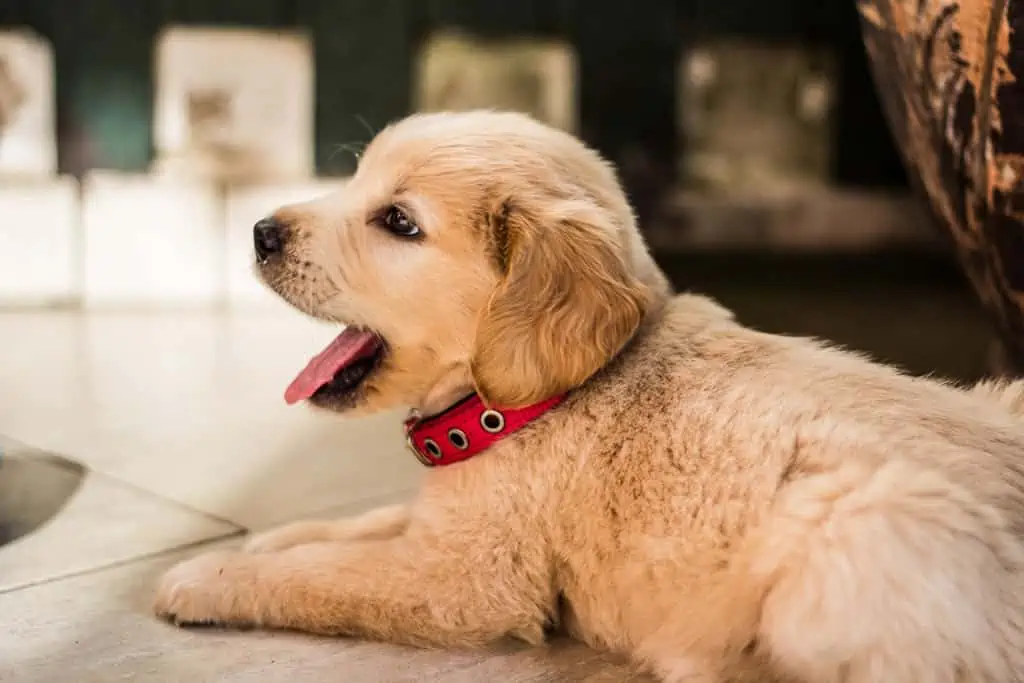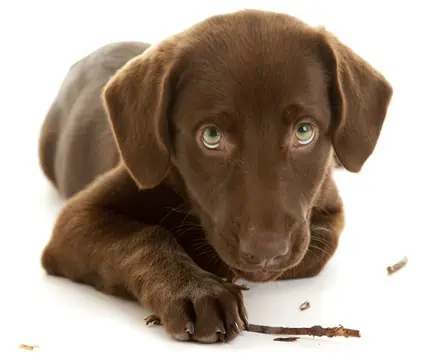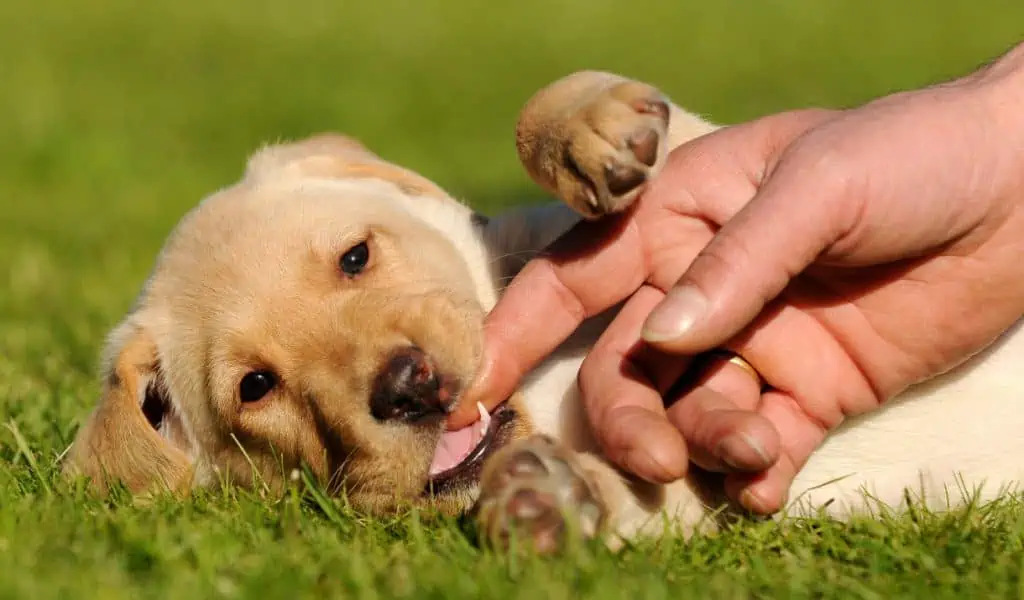Surviving Puppyhood: Tips for Puppy Teething

In these tips for puppy teething, we’ll give you some ideas to survive puppyhood. Just like us, dogs have two sets of teeth. Anywhere from three to six weeks is when their baby teeth arrive. Between 4 months to a year is when they lose those baby teeth and they are replaced by permanent adult teeth.
Though teething lasts only for a short time, you should keep a close watch on your puppy. During teething, the puppies may experience redness, irritation, pain and swelling in their gums. Chewing and biting helps relieve some of this discomfort. When puppies are going through teething, they are likely to sink their teeth into nearly anything.
You want to discourage the puppy from chewing or biting fingers, shoes and furniture, so this is the best time to substitute acceptable items. You can work on training “leave it” during this time, but remember the puppy is going to be fairly miserable so the more enticing the substitute toy or treat, the more effective the training.
Here are a few tips to ease your puppy’s teething problems.
Give the puppy an acceptable item to chew
The growth of new teeth puts a lot of pressure on the puppy’s gums. The puppy will do the chewing anyway, so the trick is to give it an acceptable item to chew. You can present him with a chew toy or healthy dog treats before new teeth start appearing.
Encourage him to chew on acceptable items, with a little trick
To enhance your puppy’s habit of biting the chew toys or healthy treats, rub a small amount of peanut butter on them, twice a day. You can also substitute bacon grease, cream cheese, plain yogurt or cheese whiz every now and then.
Instead of rawhide, consider giving your puppy a chew treat that is safe and digestible like trachea, beef tripe strips or bully sticks. These are great for his health and easier to digest than rawhide. Dried beef tracheas are hollow, so you can insert some peanut butter or other favorite filling and provide him with a healthy, long lasting chew.
Give your puppy a few ice cubes to chew on
Drop a few ice cubes into the puppy’s feeding bowl. For toy breeds, use crushed ice. It will melt quickly as the puppy bites into it. It will give your puppy some relief from the gum irritation, at least for a short while.
Freeze a treat and give it to the puppy to chew
Dip a rope toy into water, wring it and freeze it. When the puppy shows signs that he might need to chew, give the frozen rope toy. The cold will help alleviate the pain and irritation in his gums. When the toy becomes warm and soft, rinse it with water and refreeze it, for next time.
You can also use cold carrots – not only will they soothe the gums, they offer vitamins. Be careful to limit the carrots to one a day as they are also high in fiber.
You can chill or freeze chews like Jr. Chews and even duck feet. You can also freeze large raw meaty bones but like any other chew, make sure you monitor your puppy while chewing.
Massage your puppy’s gums
You can massage your puppy’s gums to reduce the pain. Put the puppy in your lap, support its chin with one hand and gently rub the gums with the fingers of your other hand.
Mix it up… depending on what works for the puppy – he may want a soft chew like a rope toy one minute and then a hard rubber toy or hard treat the next.




